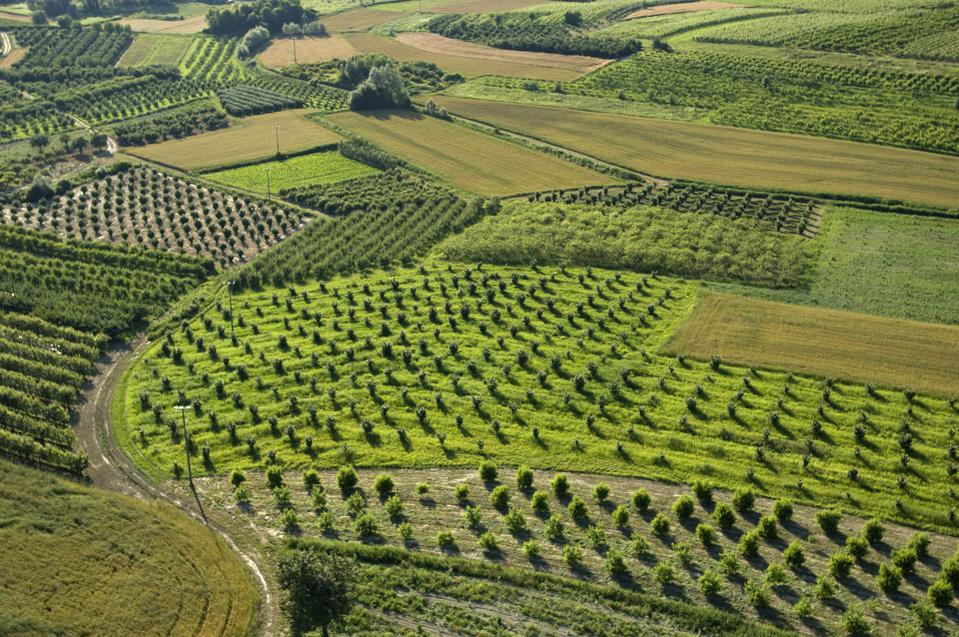Forbes - www.forbes.com
Racy And Elegant Italian Wines From Roero

Improved viticulture, better control of fermentation thermodynamics and the ability for winemakers to fly and work throughout the world have all been factors that have elevated the quality of international wines during the past 30 years.
The Piedmont (Piemonte) region of northwest Italy has long been—deservedly—associated with high quality Barolo and Barbaresco wines made from the red Nebbiolo grape. Today, however, less tannic, often fresher and very affordable versions of Nebbiolo produced in the Roero appellation—north and across the Tanaro River—include some wines with head turning ratios of quality to price. Also, Roero whites made from the Arneis grape are notching up in versatility and gaining deserved respect.
The Roero Denominazione di Origine Controllata e Garantita (DOCG) wine appellation is 2,860 acres (1,158 hectares) in size—or about three and a half times the size of New York’s Central Park. The DOCG includes 19 municipalities and produces seven million bottles of wine annually, of which 60% are exported. Its red wine (from the Nebbiolo grape) accounts for 23% of production, while the balance comes from white Arneis. The title ‘Roero Arneis’ means that wine is made 95% from the Arneis white grape, while the title ‘Roero’ refers to red wines comprised of at least 95% Nebbiolo.
Although Roero, Barolo and Barbaresco form a geographical triangle and each is less than a half hour drive from the other, the Roero’s position north of the Tanaro River provides it with distinct vine growing conditions.
A quarter million years ago the Tanaro River changed course from flowing northwest to instead meandering eastward—cutting through sediments and forming steep hills that characterize much of today’s Roero. Soils are generally loose and permeable—hence poor in organic materials but rich in mineral salts (having been a seabed in the past). Rainfall, at 25 to 28 inches (650 to 720 millimeters) a year results in a semi-arid climate. Unlike vineyards south of the Tanaro River—many Roero vines are integrated into a patchwork of woodlands and orchards. This bramble of biological interconnections appears to be reflected in the rich diversity of tastes found within these regional wines.
The white Arneis grape—grown in the region since the 15th century—was a viticultural staple during the Medieval era. It was mentioned in writing in the year 1442 in the archives of the Malabaila family. It was once planted in proximity to Nebbiolo to lure birds away from nibbling on that more reputable fruit, or else it was grown to produce sweet wines. In the 1960’s—according to sommelier Andrea Dani—winemakers experimenting with steel tanks and controlled temperatures began producing more distinct white wines to better express inherent characteristics of the Roero. This led to an explosion in interest and consequent plantings. In 1970,
about 50 acres (20 hectares) of Arneis grew in Roero, while today there are more than 2,200 acres (900 hectares) planted.
Lucrezia Povero, a fourth-generation producer from Tenuta Fratelli Povero, considers ‘delicate freshness and light minerality’ as key characteristics of Roero white wines. Producers at Filippo Gallino believe that large quantities of sandy soils north of the Tanaro River give Arneis its elegant expression.
Arneis can be light and racy, but also honeyed and calm. It’s more an elegant traveler wearing a pashmina scarf than a downhill skier. It can have medium body and glows as well as shines with fruit flavors—often including green apples.
The red wine of Roero—Nebbiolo—was first mentioned in the year 1303 in a notary document that served as a receipt for someone paying rent with two carts of wine—of which one was Nebbiolo.
Characteristics of Roero Nebbiolo include elegance and more distinct cherry flavors than those from neighboring appellations. Lucrezia Malabaila of Cantina Malabaila characterized the wine: ‘Elegance; tannins through the sand give smoothness, a sensation of velvet.’
Wine producer Daniele Pelassa believes that ‘Roero has interesting verticality due to its sandy soils, which provides minerality, cleans the palate and makes the wine food friendly—not just with truffles, but with a wide range of dishes.’
Roero Nebbiolo can be aged for years, or opened immediately. Rich, but also light and easy to drink, it is a wine both for solo and social enjoyment. Winemaker Giovanni Correggia suggests that drinkers ‘Enjoy Nebbiolo with a book, or before the fireplace, perhaps with a light pasta dish.’ Producer Davide Chiesa is even more emphatic about the wine’s versatility. ‘Roero is both a meditation and a party wine. Best for Sunday lunch with the family.’
Since 2013 many of these wines have been promoted by Consorzio di Tutela Roero, which includes 233 members and which functions, basically, to protect and promote Roero DOCG wines.
‘Riserva’ Roero red wines must age for 32 months, and non-reserve reds for 20 months. For whites it’s 16 months aging for ‘riserva’ and four months for non-reserve. These time periods begin on the first of November of the year of harvest.
Below are notes on a dozen wines—six whites and six reds—from Roero producers. All are excellent and score from 89 up to (and including) 95 points on a subjective 100-point scale.
